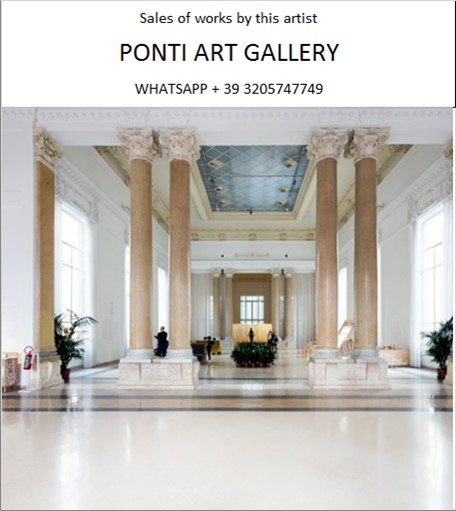Ponti Art Gallery is interested in buying and selling works
of art by this artist.

Robert Morris Biography
Robert Morris, born on February 9, 1931, in Kansas City, Missouri, and passing away on November 28, 2018, in Kingston, New York, was a pivotal figure in the postwar American art scene, whose versatile practice spanned across a multitude of artistic movements and mediums. Morris's career, deeply embedded in the fabric of 20th-century art history, was marked by his significant contributions to Minimalism, Post-Minimalism, Process Art, Land Art, and Performance Art. His work, characterized by a profound engagement with the materials, forms, and conceptual underpinnings of art-making, has left an indelible mark on the trajectory of contemporary art.
Morris's early life and education laid the groundwork for his expansive artistic career. After studying engineering at the University of Kansas between 1948 and 1950, Morris shifted his focus to art, studying at the Kansas City Art Institute and later at Reed College. His time in the military, serving with the United States Army Corps of Engineers in Arizona and Korea between 1951 and 1952, introduced him to a disciplined approach that would later permeate his artistic practice. In 1959, Morris moved to New York City to study sculpture, receiving a master's degree in art history from Hunter College in 1963. It was in New York that Morris's artistic vision began to crystallize, influenced by the city's vibrant art scene and his interactions with other artists.
Morris's work in the 1960s was marked by a radical departure from traditional art forms. Initially influenced by Abstract Expressionism, Morris's focus shifted towards the exploration of minimal forms, materials, and the spatial relationship between the artwork and the viewer. His groundbreaking show at the Green Gallery in New York in 1963 featured Minimal sculptures that challenged the viewer's perception of space and form. This exhibition, along with his theoretical writings, particularly "Notes on Sculpture," positioned Morris as a central figure in the Minimalist movement, alongside contemporaries such as Donald Judd.
However, Morris's artistic interests were not confined to Minimalism. He also made significant contributions to the development of Process Art, where the production process itself became a critical element of the artwork. His use of unconventional materials such as felt, mirrors, and steam in the late 1960s and early 1970s emphasized the ephemeral and transient nature of art, a stark contrast to the static, geometric forms of Minimalism.
Performance Art and Land Art were other areas where Morris left his mark. His performance pieces, often involving simple, repetitive actions, explored the relationship between the body and space, while his Land Art projects engaged directly with the environment, challenging the boundaries between art and nature.
Throughout his career, Morris remained deeply engaged with theoretical and critical discourse, contributing essays that articulated the philosophical underpinnings of his and his contemporaries' art. His writings on Minimalism, in particular, have been influential in shaping the understanding of this movement.
In the later years of his career, Morris's work became more figurative, reflecting his ongoing interest in exploring new directions and challenging existing paradigms. Despite the shifts in his artistic practice, the themes of process, materiality, and the viewer's engagement with space remained central to his work.
Robert Morris's legacy is that of an artist who was never content to rest within the boundaries of a single movement or medium. His relentless experimentation and theoretical contributions have made him a seminal figure in the history of contemporary art, whose work continues to inspire and challenge artists and audiences alike.
Robert Morris Quotes and Sales
of Works
Ponti Art Gallery selects and deals with paintings by the
artist. Upon request, we provide free estimates and
evaluations, communicate prices, quotations, and current
market values.
If you are interested in BUYING or SELLING works by the
artist, contact us immediately.
If you wish to sell or receive an evaluation of the
works:
Send us a frontal photo of the painting, one of the back,
and one of the signature. Also, indicate the dimensions of
the work. Inform us about the purchase origin of the work
and any kind of available documentation (purchase
receipts, certificates of authenticity, publications). One
of our operators will respond to you on the same day. We
guarantee maximum confidentiality and extreme
professionalism.
If you wish to purchase works by the painter: Contact us
and let us know your request. We will inform you about the
available works. We also offer the possibility to
subscribe to our NEWSLETTER, through which you will be
informed at the beginning of each month about the latest
acquisitions of the art gallery.
You can send us pictures of the work:
